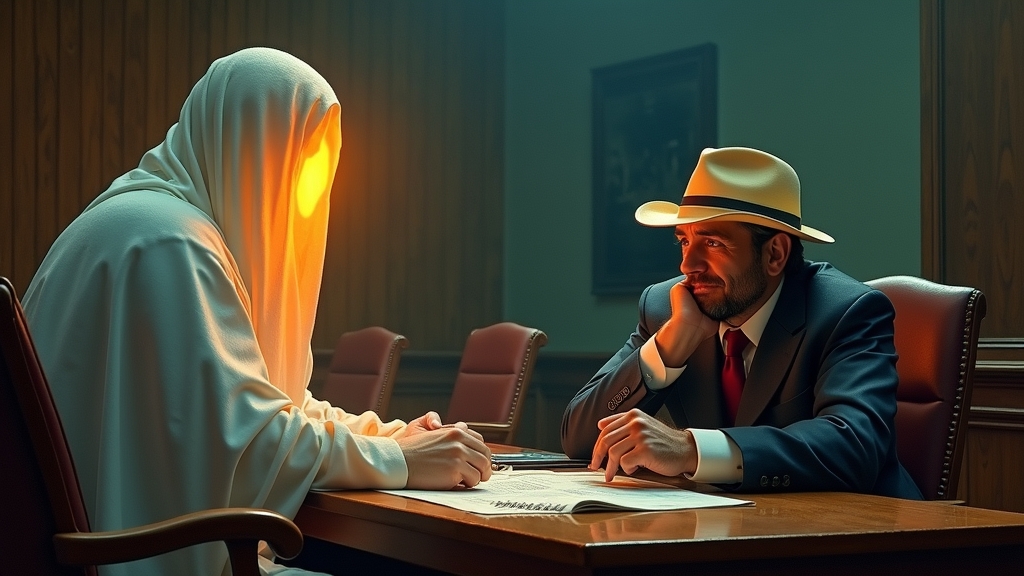DEAD MAN’S VIRTUAL GHOST TELLS KILLER “WE COULD’VE BEEN BROS” IN COURT SHOCKER; LEGAL SYSTEM NOW TAKING REQUESTS FROM THE AFTERLIFE
In a twist that has prosecutors questioning if they need to start hiring exorcists, a deceased Arizona man appeared in court yesterday via AI to tell his killer, “No hard feelings, bro, maybe in another dimension we could’ve crushed some beers together.”
THE AFTERLIFE JUST GOT WIFI
Chris Pelkey, who was fatally shot during a road rage incident in 2021, made what experts are calling “the most awkward post-mortem appearance since Elvis at that gas station in Michigan.” The digital resurrection allowed Pelkey to deliver his own victim impact statement, telling his killer Gabriel Horcasitas that under different circumstances, they “probably could have been friends.”
“I believe in forgiveness,” the algorithmically reanimated Pelkey told the court, while everyone present questioned if they were having a collective hallucination or if someone had spiked the courtroom water cooler.
LEGAL EXPERTS WEIGH IN, THEN IMMEDIATELY WEIGH OUT
“This opens up a whole new can of f@#king worms,” explained legal analyst Dr. Sue Every’Body, author of “So You’ve Been Murdered: A Guide to Posthumous Litigation.” “Do we need to start preserving everyone’s voice and likeness in case they want to haunt their killers in court later? Does the Sixth Amendment extend to confronting witnesses who’ve been dead for years?”
Court officials reportedly needed three shots of whiskey after the proceedings, with Judge Martha Strickland allegedly muttering, “I didn’t go to law school for this sh!t” under her breath.
ROAD RAGE: NOW WITH SEQUEL POTENTIAL
Witnesses say the courtroom fell deadly silent during the AI presentation, with one juror reportedly checking his own pulse to ensure he hadn’t joined Pelkey in the great beyond.
The incident that led to this unprecedented court appearance began at a red light in Chandler, where Pelkey exited his vehicle and approached Horcasitas’s car. Statistics show that 87% of road rage incidents end with someone giving the finger, 12% end with a colorful exchange of regional insults, and apparently 1% end with someone getting shot and then returning via computer algorithm to deliver cosmic forgiveness.
RELIGIOUS COMMUNITY SPLIT ON DIGITAL RESURRECTION
Local pastor Reverend Al Gorithm expressed concerns about the theological implications. “We’ve always taught that resurrection is God’s domain, not Adobe’s,” he said. “Though I must admit, their rendering was surprisingly lifelike.”
Meanwhile, tech ethicist Professor Dee Pendor warns this could create unrealistic expectations. “Not everyone who dies violently is going to be as chill about it as Pelkey,” she explained. “Imagine an AI version of someone screaming ‘I’LL KILL YOU BACK SOMEHOW’ for 45 minutes. That’s not going to help the justice system.”
At press time, courts across America were reportedly fielding requests from families wanting to digitally resurrect victims with less forgiving attitudes, prompting lawmakers to consider a new legal category: “Testimony from Beyond the Digital Grave, But Only If They Promise to Be Cool About It.”





